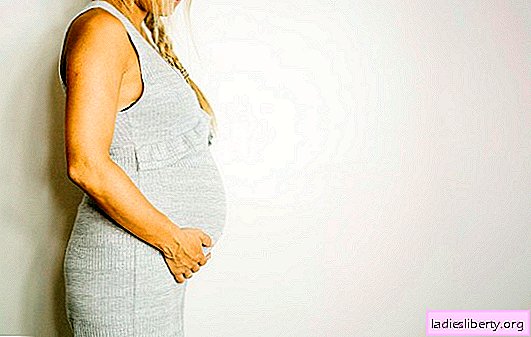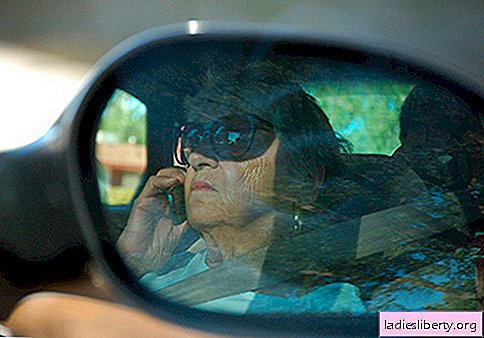
What is ovulation
Women who are planning a pregnancy are faced with the concept of ovulation. This process for conception is very important, because if ovulation has not occurred, then fertilization will not occur, even if sexual intercourse occurs every day. So what is ovulation and why is it impossible to conceive without it? In short, ovulation is the process that accompanies the release of a fully matured and ready to fertilize an egg from a follicle. It lasts only a few minutes, as soon as the egg leaves the follicle, ovulation will end.
Since the birth of every woman about one million eggs have been laid. They are in the ovaries in a sleeping state, each egg is hidden in a follicle house, and is waiting in line to go outside. Not all eggs are destined to mature or be fertilized; many of them remain in their infancy in the follicles and die over time. By the time of puberty of the female body (the first menstruation), 300-400 thousand remain in the ovaries from a million. follicles. And for the entire reproductive period, about 400-500 ovules matured and ready for fertilization ovulate.
About once a month, under the influence of the hormones of the first phase, several eggs (from 10 to 15) begin to awaken, mature and grow together with the follicles in size. After ten days, from one and a half dozen awakened follicles, one begins to stand out, it is called dominant. It is much larger than the rest, its size reaches about 15-20 mm, sometimes more. When the egg inside it reaches its peak of maturation, the follicle bursts and the egg goes out into the abdominal cavity. Here she is picked up by the fibers of the fallopian tubes and moves along them into the uterine cavity. More correctly, it is not advancing, but the fallopian tubes, contracting, push the egg. Within 24 hours, she is ready for fertilization, and if a sperm meets her way, then conception will occur. The egg begins to divide, turning into an embryo, continuing to move into the uterine cavity, where it will attach to its wall and pregnancy will begin to develop. If for some reason, the embryo dies or cannot be implanted (attached) to the uterus, after a certain time, under the influence of hormones of the second, luteal phase, endometrium is rejected from the uterine cavity, i.e. menstruation begins. In rare cases, ovulation of two or three eggs occurs, then conception of two or three embryos occurs, a woman develops a multiple pregnancy and twins or triplets (heterogeneous twins) are born.
Signs of ovulation (how to determine ovulation)
For couples planning a baby, it is very important to know the moment of ovulation, so as not to miss it. Are there any signs of ovulation? Yes, and there are several. Firstly, a basal temperature chart can help a lot. If a woman keeps such a schedule, every morning measures the temperature and records the testimony, then she noticed that every month, approximately in the middle of the cycle, the temperature drops by 0.2-0.3 degrees, and the next day sharply increases by 0.4-0 , 6 degrees, i.e. a jump occurs. So on the day when the temperature drops, and the egg goes out, i.e. ovulation. On the graph, this is seen as an ovulatory temperature drop. That is, if you see that the temperature has gone down, then the most favorable time has come for conception. It is known that the sperm of a healthy man remains motile and viable for five days, so if a couple had sexual intercourse a few days before ovulation, the sperm in the fallopian tubes is highly likely to wait for an egg and fertilization. But the most favorable period is considered to be the day of ovulation itself and 12-15 hours after its onset. The question may arise, why not a day, because the egg "lives" 24 hours? Do not forget that the sperm is not a Formula 1 car, and it needs time, or rather, several hours, to travel the necessary distance to meet the egg in the fallopian tubes.
Secondly, ovulation can be traced without a schedule, by vaginal discharge. When the time for the release of a ripened egg approaches, the secretions become more liquid, transparent and slippery, in appearance they resemble a chicken egg protein. It is quite easy to notice ovulatory secretions - they become mucous and abundant, stretch well. The most accurate method for determining the time of ovulation is folliculometry, or, a more familiar name, ultrasound monitoring, when the growth of follicles is monitored using ultrasound equipment. The first study is carried out approximately on the 10th day of the menstrual cycle, then it is necessary to visit a doctor once every two days before ovulation.
There are also subjective signs of ovulation. These are short-term pains or tingling in the lower abdomen at the moment when the follicle bursts. Or increased sexual desire that occurs in some women during ovulation. Still, focus on subjective signs is not worth it, because abdominal pain may not be ovulatory at all, and increased sexual excitability is caused by other causes. Therefore, it is better to maintain a temperature schedule, focus on ultrasound monitoring or use ovulation tests.
Ovulation tests
Ovulation tests are one way to determine the day of ovulation. They are quite simple and easy to operate. They are test paper strips, usually 5 pieces per pack. The strip is divided into two halves - one control, with colored risk applied, the other diagnostic, on which the reagent is applied. It remains invisible until a strip is lowered into the bowl with urine. They work similarly to pregnancy tests, only urine does not respond to hCG, but to luteinizing hormone. The peak release of this hormone in the body occurs 12-36 hours before the onset of ovulation. They begin testing, focusing on the duration of their menstrual cycle. If its length is, for example, 28 days, then the first strip should begin to soak from the eleventh day. It is advisable to carry out the procedure at the same time and not to drink a lot of fluids. It is necessary for several seconds to lower the strip into the container with urine, and after three minutes to see the result. If the reagent strip on the diagnostic half of the test is the same color as the control, or darker than it, then the result is positive. If it is lighter, the test should be repeated the next day.
Ovulation Days (ovulation cycle)
To roughly determine the day of ovulation, you need to know the duration of the menstrual cycle. It can have different lengths for different women, the duration is considered to be the norm from 21 to 35 days. Each cycle can be conditionally divided into two phases - follicular, before ovulation and luteal, which begins after ovulation. These phases have different lengths, the first can be from 9 to 21 days, the second from 12 to 16 days. The second phase is more stable, but the first, even in the same woman, can lengthen or shorten, depending on the time of follicle maturation, which is regulated and controlled by a complex hormonal process. Therefore, in calculating the approximate day of ovulation, one should proceed from the second phase. For example, with a 31-day cycle, the length of the second phase will be 14-15 days, which means you can expect ovulation from the 16-17th day of the menstrual cycle. With a 28-day - from 13-14 days of the cycle, with a 21-day - from the ninth day.
If the cycle is regular and stable, then ovulation will occur on the same days of the cycle, then you can use this formula for calculation. If the cycle is irregular, you will have to use additional methods to determine the day of release of the egg, or provide for the days to reserve in one direction or another, in case ovulation is delayed or occurs earlier than usual.

Irregular cycle and pregnancy
When planning pregnancy, a woman may need to take complexes of biologically active substances that normalize and support reproductive function. For example, TIME-FACTOR® biologically active food supplement, which contains vitamins C and E, folic acid, rutin, minerals (iron, magnesium and zinc), indole-3-carbinol, glutamic acid, aucubin, gingerols, as well as standardized plant extracts of angelica roots, ginger root and sacred Vitex fruits. The complex of biologically active substances included in the dietary supplement TIME-FACTOR® helps to normalize the menstrual cycle and maintain hormonal balance.
If there is no ovulation
Many women believe that ovulation occurs every month. But it is not so. Normally, for a young and healthy body, up to two to three anovulatory cycles are allowed per year. The older the woman, the more her cycles go without ovulation. By 35-40 years of age, there can be only 5-7 ovulations per year. And this is also the norm. If there is no ovulation at all, in this case we can talk about violations that occur in the female body. They can be associated with infectious diseases, inflammatory processes, hormonal disruptions or stresses suffered by a woman. To identify the cause and restore the ovulatory cycle, you need to contact a gynecologist. First of all, he will prescribe laboratory tests for hormones, infections, etc. He can direct them to folliculometry in order to monitor throughout the cycle whether follicular development is occurring, at the same time assess the state of the uterus and ovaries and observe changes in the endometrium. If a woman is older than 35 years, it is necessary to check her ovarian stock. Based on the initial examination and test results, the doctor prescribes further examination or treatment. In many cases, stimulation of ovulation helps.
Ovulation stimulation
If for some reason ovulation does not occur, or occurs very rarely, stimulation can help. She is prescribed only if the woman has passable fallopian tubes, otherwise there is a high probability of an ectopic pregnancy. Stimulation is carried out only under the supervision of a doctor. Depending on the woman’s age and test results, a number of hormonal medications are prescribed. When prescribing treatment, the doctor simultaneously monitors the growth of follicles by ultrasound. As soon as the dominant follicle of the desired size is detected, a dose of another drug is introduced - Rotten, which causes ovulation. Drug stimulation is a fairly effective method of fighting infertility, which has helped so many couples get a long-awaited baby.
In addition to medication, there is also a folk method of stimulating ovulation when taking infusions of herbs. In the first half of the cycle, to increase the endometrium and stimulate the maturation of the egg, they drink a decoction of a red brush or sage, and in the second phase - a decoction of the boron uterus, which contributes to the production of progesterone, so that in case of pregnancy, support it at first. To think that all herbs are harmless and to prescribe a treatment for yourself is a very rash step. Use infusions only with the approval of a doctor, otherwise you can harm your health and bring down the hormonal balance.
Save Save
Comments











